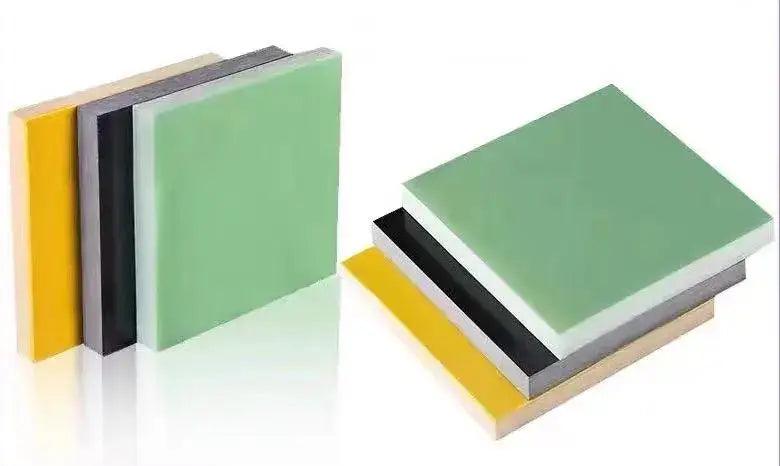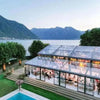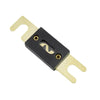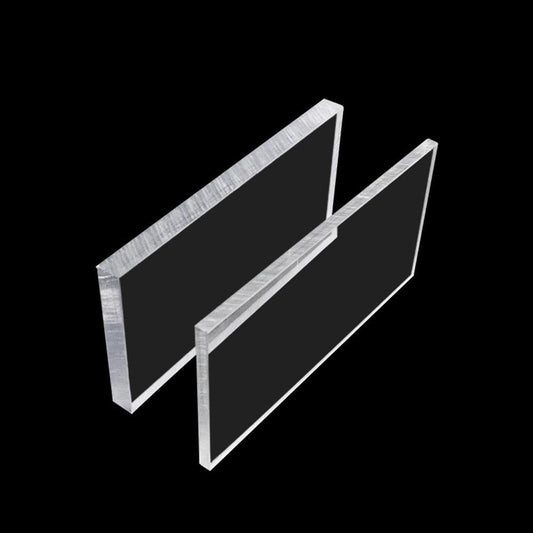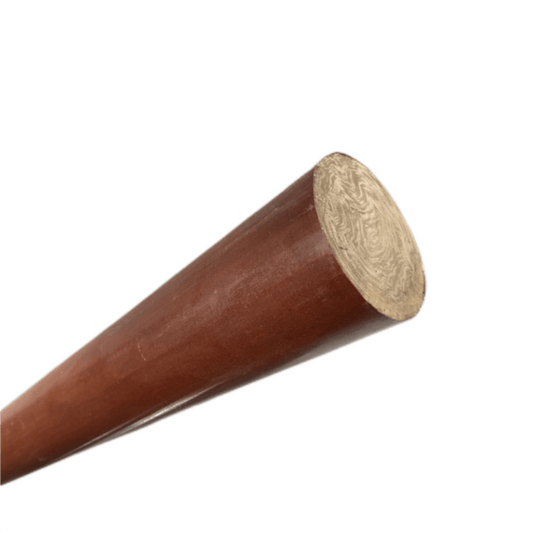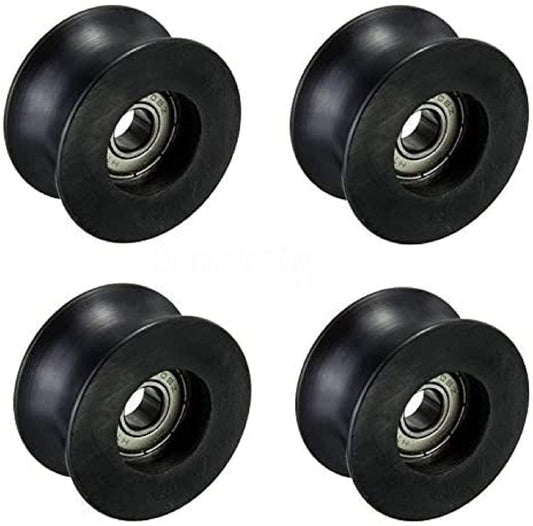Unlock the secrets of FR-4 material with my comprehensive guide, perfect for electronics professionals seeking to enhance their knowledge and applications. In this blog post, I explore the composition of FR-4 material, highlighting its unique glass-reinforced epoxy structure. Delve into the key properties that make FR-4 indispensable, such as its dielectric constant, thermal conductivity, flame retardancy, and mechanical strength. Understand the mechanical and thermal characteristics that ensure FR-4's reliability in various environments.
🎉🎉🎉Limited Time Offer Use code: QR4GNY08SHVR at checkout and enjoy a special discount on your entire order! 👉 FR4 fiberglass plastic

Discover the diverse applications of FR-4 in communication devices, computer hardware, consumer electronics, industrial electronics, and medical devices. Learn how to choose the right FR-4 material for your PCB design by considering factors like board thickness, dielectric properties, and thermal performance. Finally, compare FR-4 with alternative PCB materials to understand its advantages and limitations.
This guide provides practical insights and expert tips, making it a must-read for anyone working with FR-4 glass epoxy and looking to optimize their electronic designs. Dive into the complete guide and elevate your understanding of FR-4 material properties today!
Understanding the Composition of FR-4 Material
What is FR-4 Material?
FR-4 material is a popular substrate used in the electronics industry, especially for printed circuit boards (PCBs). The term "FR" stands for "flame retardant," while "4" indicates the specific NEMA (National Electrical Manufacturers Association) grade of this material. This classification ensures that FR-4 complies with the UL94V-0 standard, crucial for materials used in electronic applications requiring flame retardancy.
The Core Components of FR-4 Material
The composition of FR-4 material primarily consists of glass-reinforced epoxy, providing a unique balance of mechanical strength and electrical insulation.
Glass Fiber Cloth
One of the fundamental components of FR-4 is glass fiber cloth. This cloth is woven from strands of glass fibers, which are known for their high tensile strength and durability. The glass fiber cloth serves as the reinforcing agent, contributing to the overall mechanical integrity of the FR-4 laminate. This reinforcement ensures that the material can withstand physical stresses during the manufacturing and operational phases of electronic devices.
Epoxy Resin
The second critical component is epoxy resin. This thermosetting polymer acts as the binding matrix that holds the glass fibers together. Epoxy resin is valued for its excellent adhesive properties, chemical resistance, and thermal stability. When combined with glass fibers, it forms a rigid, durable material capable of providing robust electrical insulation. This combination is essential for maintaining the reliability and performance of PCBs in various electronic applications.
The Role of Glass-Reinforced Epoxy in FR-4
The synergy between glass fiber cloth and epoxy resin creates a composite material that excels in multiple domains:
- Mechanical Strength: The glass fibers provide high tensile strength, making the FR-4 material resistant to bending and breaking under stress.
- Electrical Insulation: The epoxy resin ensures excellent insulation, preventing electrical shorts and maintaining signal integrity within the PCB.
- Flame Retardancy: Both components contribute to the material's ability to resist ignition and self-extinguish if exposed to fire, complying with the UL94V-0 standard.
Applications of FR-4 Material
Given its balanced properties, FR-4 material is extensively used in various electronic applications. These include consumer electronics, telecommunication devices, automotive electronics, and industrial control systems. Its versatility and reliability make it a preferred choice for engineers and designers aiming to create robust and efficient electronic devices.
Conclusion
Understanding the composition of FR-4 material highlights why it remains a cornerstone in PCB manufacturing. Its unique blend of glass fiber cloth and epoxy resin offers a combination of mechanical strength, electrical insulation, and flame retardancy, making it indispensable for modern electronics. For more detailed insights, explore our complete guide on FR-4 material properties and applications.

Key Properties of FR-4 Material
Dielectric Constant
One of the most crucial FR-4 material properties is its dielectric constant (Dk). The dielectric constant of FR-4 typically ranges from 4.2 to 4.8, depending on the resin content and fiberglass weave. This property is essential because it influences the signal propagation and impedance characteristics of the PCB. A stable dielectric constant ensures consistent electrical performance across various frequencies, making FR-4 laminate ideal for many electronic applications, including high-speed digital circuits and RF designs.
Thermal Conductivity
Thermal conductivity is another significant aspect of FR-4 mechanical properties. FR-4 material exhibits moderate thermal conductivity, typically in the range of 0.3 to 0.5 watts per meter-kelvin (W/m·K). This property facilitates efficient heat dissipation from electronic components mounted on the board. Effective thermal management is crucial in preventing overheating and ensuring the long-term reliability of electronic devices. For applications requiring higher thermal performance, advanced FR-4 laminates with enhanced thermal conductivity are available.
Flame Retardancy
Flame retardancy is a defining feature of FR-4 material. Complying with the UL94V-0 standard, FR-4 exhibits excellent resistance to ignition and self-extinguishes if exposed to fire. This characteristic is vital for maintaining safety and reliability in electronic devices, especially in consumer electronics, automotive systems, and industrial equipment. The flame retardant nature of FR-4 is achieved through the incorporation of brominated epoxy resin, which helps in preventing the spread of fire and minimizing fire-related hazards.
Mechanical Strength
The mechanical strength of FR-4 laminate is another key property that makes it highly suitable for PCB applications. The combination of glass fiber cloth and epoxy resin provides a robust and rigid structure. This high tensile strength and rigidity ensure that the PCB can withstand physical stresses during both the manufacturing process and operational use. The durability of FR-4 makes it a preferred choice for applications requiring reliable and long-lasting performance, such as in industrial control systems and automotive electronics.
Moisture Resistance
Moisture resistance is a critical property of FR-4 material, particularly for applications in humid or marine environments. FR-4 exhibits low water absorption, which helps maintain its electrical and mechanical properties even under adverse conditions. This resistance to moisture makes FR-4 suitable for use in outdoor and moisture-sensitive devices, ensuring consistent performance and reliability.
Versatility and Cost-Effectiveness
The versatility and cost-effectiveness of FR-4 laminate are notable advantages. FR-4 is compatible with standard PCB fabrication processes, including drilling, etching, and soldering, which simplifies manufacturing and reduces production costs. Its relatively low cost compared to alternative materials makes it an attractive choice for mass production and cost-sensitive applications, such as consumer electronics and communication devices.
Summary of Key Properties
To summarize, the essential properties of FR-4 material include its dielectric constant, thermal conductivity, flame retardancy, mechanical strength, moisture resistance, and cost-effectiveness. These properties collectively make FR-4 an ideal choice for a wide range of PCB applications, ensuring reliable performance, safety, and efficiency in various electronic devices.

Mechanical and Thermal Characteristics of FR-4
Density and Thickness Range
FR-4 mechanical properties are highly influenced by its density and thickness. The density of FR-4 epoxy glass cloth laminate typically ranges from 1.7 to 1.9 grams per cubic centimeter (g/cm³), which provides a balance between mechanical strength and weight. This density is crucial for ensuring the PCB's durability while keeping it lightweight enough for various applications.
The thickness of FR-4 plates varies widely to cater to different design requirements. Common thicknesses range from 0.4 millimeters to 3.2 millimeters. Thinner laminates are used in applications where space-saving is critical, such as in compact consumer electronics. On the other hand, thicker laminates are preferred for applications requiring additional mechanical strength and rigidity, like in industrial control systems.
Thermal Stability
Thermal stability is a key factor in the performance of FR-4 material. FR-4 exhibits excellent thermal stability with a glass transition temperature (Tg) typically between 115°C and 200°C, depending on the specific formulation. This property ensures that the material maintains its structural integrity and electrical properties even under high temperatures encountered during soldering processes and operational use.
High Tg FR-4 materials are available for applications requiring greater thermal endurance, such as in automotive and aerospace electronics. These materials can withstand higher operational temperatures without degrading, making them suitable for demanding environments.
Resistance to Moisture and Chemical Exposure
Moisture resistance is another critical characteristic of FR-4 epoxy glass cloth laminate. FR-4 has low water absorption, typically less than 0.10%, which helps maintain its mechanical and electrical properties in humid environments. This resistance to moisture is vital for applications in marine and outdoor settings, ensuring consistent performance and longevity.
Chemical resistance is also a significant advantage of FR-4 material. The epoxy resin used in FR-4 laminates provides good resistance to a wide range of chemicals, including solvents, acids, and bases. This property is essential for PCBs used in industrial and harsh environments where exposure to chemicals is common.
Practical Insights into PCB Performance
The mechanical and thermal characteristics of FR-4 plates directly impact the performance and reliability of PCBs. For instance, the high mechanical strength of FR-4 ensures that PCBs can withstand physical stresses during manufacturing and use, reducing the risk of damage or failure. This is particularly important in applications involving vibration or mechanical shocks, such as in automotive and industrial electronics.
The excellent thermal stability of FR-4 allows it to endure the high temperatures of soldering processes without losing its properties. This stability is crucial for maintaining the integrity of solder joints and preventing thermal deformation of the PCB, which can lead to electrical failures.
Moreover, the moisture and chemical resistance of FR-4 materials make them ideal for use in environments where PCBs are exposed to harsh conditions. These characteristics ensure that the PCBs remain functional and reliable over extended periods, even in challenging applications.
Conclusion
Understanding the mechanical and thermal characteristics of FR-4 material is essential for optimizing PCB performance in various applications. The combination of density, thickness, thermal stability, and resistance to moisture and chemicals makes FR-4 a versatile and reliable choice for numerous electronic devices. For further insights, explore resources from beeplastic.com.

Applications of FR-4 Material in Electronics
Communication Equipment
FR-4 glass epoxy is extensively used in communication equipment due to its excellent electrical insulation and mechanical strength. Devices such as routers, switches, modems, and antennas rely on FR-4 laminates to ensure reliable signal transmission and minimal interference. The stability and durability of FR-4 epoxy make it ideal for these high-frequency applications, where maintaining signal integrity is crucial.
Computer Hardware
In the realm of computer hardware, FR-4 material is a staple for manufacturing various components, including motherboards, graphic cards, memory modules, and CPUs. The mechanical properties of FR-4 epoxy glass cloth laminate provide the necessary rigidity and support for these intricate circuits. Additionally, its thermal stability ensures that the PCBs can withstand the heat generated during operation, preventing damage and ensuring long-term performance.
Consumer Electronics
FR-4 laminate is a preferred choice in consumer electronics due to its cost-effectiveness and versatile properties. Products such as smartphones, tablets, televisions, and gaming consoles incorporate FR-4 epoxy PCBs to achieve a balance of performance and affordability. The material's ability to maintain electrical performance under various environmental conditions makes it suitable for the diverse range of consumer electronics applications.
Industrial Electronics
In industrial electronics, FR-4 material is used in control systems, instrumentation, power supplies, and automation equipment. The high mechanical strength and chemical resistance of FR-4 epoxy glass cloth laminate enable it to endure harsh industrial environments. Its reliability ensures that electronic systems remain functional and efficient, even under demanding operational conditions.
Medical Devices
FR-4 glass epoxy is also pivotal in the development of medical devices. Equipment such as diagnostic tools, patient monitors, and imaging systems utilize FR-4 laminates for their PCBs. The material's excellent electrical insulation and thermal stability are critical for the precision and reliability required in medical applications. Furthermore, its resistance to moisture and chemicals ensures that the devices can operate safely in various healthcare settings.
Automotive Electronics
FR-4 epoxy is essential in automotive electronics, where it is used in engine control units, infotainment systems, and safety devices. The material's ability to withstand high temperatures and mechanical stresses makes it suitable for the rigorous demands of the automotive industry. FR-4 laminates provide the necessary durability and reliability to ensure that electronic components function correctly and safely in vehicles.
Aerospace Electronics
The aerospace industry also benefits from FR-4 material in manufacturing avionics and other critical electronic systems. The high thermal stability and flame retardancy of FR-4 epoxy are essential for ensuring the safety and reliability of aerospace applications. The material's ability to maintain performance under extreme conditions makes it a valuable component in this field.
FR-4 material is indispensable across various electronic devices and industries, from communication equipment and computer hardware to consumer electronics, industrial electronics, medical devices, automotive electronics, and aerospace electronics. Its unique properties ensure that it meets the diverse requirements of these applications, making it a preferred choice for PCB manufacturing.

Choosing the Right FR-4 Material for Your PCB Design
Understanding FR-4 Material Types
Selecting the appropriate FR-4 material is crucial for optimizing PCB performance based on specific design requirements. FR-4 plates come in various types, including standard FR-4, high Tg FR-4, and high CTI FR-4. Each type offers distinct advantages depending on the application's demands. Standard FR-4 is suitable for general applications, while high Tg FR-4 provides enhanced thermal performance, making it ideal for high-temperature environments. High CTI FR-4, with its high Comparative Tracking Index, is perfect for applications requiring superior electrical insulation.
Board Thickness
Board thickness is a vital factor in choosing the right FR-4 laminate. The thickness impacts the mechanical strength, flexibility, and impedance of the PCB. Thinner boards, ranging from 0.4 to 1.6 millimeters, are preferred for compact devices such as smartphones and tablets due to their space-saving properties. Thicker boards, from 1.6 to 3.2 millimeters, offer enhanced rigidity and are suitable for applications that demand robust mechanical strength, such as industrial control systems and automotive electronics.
Dielectric Properties
The dielectric properties of FR-4 material play a significant role in determining the PCB's electrical performance. The dielectric constant (Dk) and dissipation factor (Df) affect signal propagation and impedance control. For high-frequency applications, selecting an FR-4 laminate with a low Dk and Df is essential to minimize signal loss and ensure stable impedance. This is particularly important in communication devices and high-speed digital circuits, where maintaining signal integrity is crucial.
Thermal Performance
Thermal performance is another critical consideration when selecting FR-4 material. The glass transition temperature (Tg) of FR-4 indicates the temperature at which the material transitions from a rigid to a more flexible state. Standard FR-4 has a Tg of around 130°C, which is sufficient for many applications. However, high Tg FR-4 materials, with Tg values exceeding 170°C, are necessary for high-temperature environments, such as automotive and aerospace electronics. These materials ensure the PCB can withstand soldering processes and operational heat without degrading.
Compatibility with Components
Ensuring compatibility with components is essential when choosing the right FR-4 plate for your design. The PCB material must support the components' mounting and soldering requirements. For instance, surface-mount technology (SMT) components require a smooth and flat surface, while through-hole components need sufficient thickness for secure mounting. Additionally, the chosen FR-4 laminate should accommodate the thermal and mechanical stresses imposed by the components during operation.
Practical Tips for Selection
When selecting FR-4 material, consider the following practical tips:
- Assess Application Requirements: Determine the environmental conditions, such as temperature and humidity, and choose an FR-4 type that meets these requirements.
- Evaluate Electrical Needs: For high-frequency applications, prioritize laminates with low Dk and Df values.
- Consider Mechanical Demands: Ensure the chosen board thickness and mechanical properties align with the device's structural needs.
- Check Manufacturer Specifications: Refer to the datasheets provided by FR-4 manufacturers to compare properties and ensure compatibility with your design.
For more detailed information, consult resources like Beeplastic.com. These sources offer comprehensive guides and datasheets to help you make an informed decision.

Comparing FR-4 with Alternative PCB Materials
High-Frequency Laminates
High-frequency laminates are designed to offer superior performance at higher frequencies compared to FR-4 material. These laminates typically have a lower dielectric constant (Dk) and dissipation factor (Df), which are crucial for minimizing signal loss and ensuring stable impedance in high-speed digital and RF applications. Materials like Rogers 4000 series and Taconic TLY series are popular choices for high-frequency PCBs.
Advantages of High-Frequency Laminates:
- Low Signal Loss: Their low Dk and Df values ensure minimal signal degradation.
- Stable Impedance: Ideal for applications requiring precise impedance control.
- Thermal Management: Often possess better thermal conductivity compared to standard FR-4.
Limitations of High-Frequency Laminates:
- Cost: These materials are significantly more expensive than FR-4 epoxy.
- Complex Manufacturing: They may require specialized manufacturing processes.
Polyimide
Polyimide is another alternative to FR-4 laminate, known for its excellent thermal stability and mechanical flexibility. Polyimide substrates are used in applications that require high heat resistance, such as in aerospace and military electronics.
Advantages of Polyimide:
- High Thermal Stability: Can withstand temperatures up to 250°C or higher.
- Flexibility: Suitable for flexible PCBs used in applications with dynamic bending and flexing.
- Chemical Resistance: Excellent resistance to chemicals, making it suitable for harsh environments.
Limitations of Polyimide:
- Cost: More expensive than standard FR-4 material.
- Moisture Absorption: Higher moisture absorption compared to FR-4, which can affect performance in humid conditions.
Ceramic Substrates
Ceramic substrates such as alumina and aluminum nitride are used for high-power and high-frequency applications due to their superior thermal conductivity and electrical insulation properties.
Advantages of Ceramic Substrates:
- Thermal Conductivity: Exceptional thermal management capabilities.
- Electrical Insulation: High dielectric strength and stability.
- Durability: Excellent mechanical strength and resistance to environmental factors.
Limitations of Ceramic Substrates:
- Cost: Significantly more expensive than FR-4 epoxy.
- Brittleness: More brittle compared to organic laminates, which can be a disadvantage in certain applications.
Comparing Advantages and Limitations
Advantages of FR-4 Material
FR-4 material remains a popular choice due to its balance of cost, performance, and versatility. It offers:
- Cost-Effectiveness: More affordable than high-frequency laminates and ceramics.
- Mechanical Strength: Adequate mechanical strength for most applications.
- Electrical Insulation: Reliable electrical insulation for general-purpose PCBs.
- Flame Retardancy: Complies with UL94V-0 standards, ensuring safety in electronic devices.
Limitations of FR-4 Material
However, FR-4 laminate has its limitations, especially when compared to specialized materials:
- High-Frequency Performance: Higher dielectric constant and dissipation factor, which can result in greater signal loss at high frequencies.
- Thermal Stability: Limited thermal performance compared to polyimide and ceramic substrates.
- Flexibility: Lacks the flexibility of polyimide, making it less suitable for applications requiring frequent bending.
Making an Informed Decision
When choosing the right material for your PCB design, consider the specific requirements of your application. If cost and general-purpose use are primary concerns, FR-4 material is often sufficient. For high-frequency applications, high-frequency laminates offer the best performance despite their higher cost. For high-temperature and flexible applications, polyimide is a suitable choice. For superior thermal management and electrical insulation, ceramic substrates are unmatched, although they come at a premium price.

Frequently Asked Questions About FR-4 Material and BeePlastics Customization
General Questions About FR-4 Material
1. What is FR-4 material?
Answer: FR-4 is a widely used grade of printed circuit board (PCB) material that is made from woven fiberglass cloth with an epoxy resin binder that is flame resistant (self-extinguishing). It stands for "Flame Retardant 4," a designation given by the National Electrical Manufacturers Association (NEMA). FR-4 is known for its excellent balance of mechanical strength, electrical insulation, and cost-effectiveness.
2. What are the key properties of FR-4 material?
Answer: The key properties of FR-4 include:
- Dielectric Constant (Dk): Typically ranges from 4.2 to 4.8.
- Thermal Conductivity: 0.3 to 0.5 W/m·K.
- Flame Retardancy: Complies with UL94V-0 standards.
- Mechanical Strength: High tensile strength and durability.
- Moisture Resistance: Low water absorption, making it suitable for humid environments.
3. What are the common applications of FR-4 material in electronics?
Answer: FR-4 material is used in various electronic applications, including:
- Communication Equipment: Routers, switches, modems, and antennas.
- Computer Hardware: Motherboards, graphic cards, memory modules, and CPUs.
- Consumer Electronics: Smartphones, tablets, televisions, and gaming consoles.
- Industrial Electronics: Control systems, instrumentation, and power supplies.
- Medical Devices: Diagnostic tools, patient monitors, and imaging systems.
- Automotive Electronics: Engine control units, infotainment systems, and safety devices.
- Aerospace Electronics: Avionics and other critical electronic systems.
4. How does FR-4 compare with alternative PCB materials?
Answer: Compared to alternative PCB materials:
- High-Frequency Laminates: Superior for high-frequency applications but more expensive.
- Polyimide: Offers better thermal stability and flexibility but at a higher cost.
- Ceramic Substrates: Excellent thermal conductivity and electrical insulation but are brittle and costly. FR-4 is favored for its balance of performance, cost-effectiveness, and versatility.
Customization Questions for BeePlastics
5. Can BeePlastics undertake any customization, including sample customization and batch customization?
Answer: Yes, BeePlastics offers comprehensive customization services, including both sample customization and batch customization. This flexibility ensures that customers can get precisely what they need, whether for prototype development or large-scale production runs.
6. What file formats does BeePlastics accept for customization projects?
Answer: BeePlastics accepts a variety of file formats to accommodate different design needs. Common formats include PDF and CAD files, ensuring compatibility with most design software and easy integration into the production process.
7. Is there a minimum order quantity (MOQ) for BeePlastics customization?
Answer: No, BeePlastics does not require a minimum order quantity (MOQ). This policy allows customers to order exactly what they need, whether it's a single prototype or a large batch of products, making it ideal for both small-scale and large-scale projects.
8. How does BeePlastics manage the production cycle for customized orders?
Answer: The production cycle at BeePlastics is tailored according to the volume and complexity of the orders. The team communicates in real-time with customers about the production progress, ensuring transparency and timely updates throughout the manufacturing process.
9. Does BeePlastics provide sample products for evaluation?
Answer: Yes, BeePlastics supports the provision of samples for customer evaluation. The samples are free of charge, with customers only responsible for the shipping costs. This allows clients to assess the quality and suitability of the products before committing to larger orders.
10. What are the advantages of choosing BeePlastics for FR-4 material customization?
Answer: BeePlastics offers several advantages for FR-4 material customization:
- Flexibility: No MOQ, accommodating both small and large orders.
- File Compatibility: Acceptance of various file formats, including PDF and CAD.
- Real-Time Communication: Updates on production progress, ensuring customer satisfaction.
- Sample Provision: Free samples for quality evaluation, enhancing customer confidence.
For more detailed information or specific inquiries, visit the BeePlastics website.
Conclusion
Understanding the properties and applications of FR-4 material is essential for electronics professionals aiming to optimize their PCB designs. From its excellent mechanical strength and electrical insulation to its versatility in various industries, FR-4 remains a cornerstone in modern electronics. Whether you’re developing communication equipment, consumer electronics, or medical devices, choosing the right FR-4 laminate can significantly impact the performance and reliability of your products. BeePlastics offers comprehensive customization services, ensuring that you get the exact specifications you need for your project, with the flexibility of no minimum order quantities and support for various file formats. By leveraging these insights and services, you can confidently enhance your electronic designs and meet the demands of today’s technological landscape. For further guidance and custom solutions, visit BeePlastics and explore their offerings to support your next innovation.

Take the next step in enhancing your electronic components with our superior FR-4 solutions. Submit your details through the contact form below to get started. For further information and to dive deeper into our FR-4 offerings, click here now.

